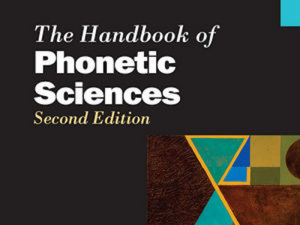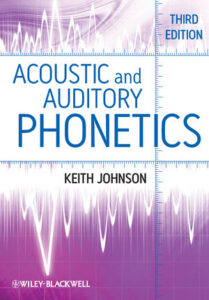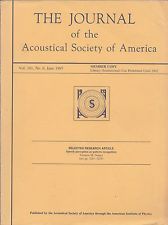A great introduction to digital signal processing, including the maths!
Taylor – Section 12.4 – Linear-Prediction Analysis
An overview of the background and maths behind linear-prediction methods for modelling the vocal tract as a filter.
Jurafsky & Martin (3rd Ed) – Hidden Markov models
An overview of Hidden Markov Models, the Viterbi algorithm, and the Baum-Welch algorithm
Plag (2003) – Word formation in English: Chapter 1 Basic Concepts
An introductory text of word structure/morphology in English. Useful to read if you come from a non-linguistic background.
Johnson (Phonetics) – Chapter 6.1 – Tube models of vowel production
Deriving the resonances and formant structures of vowels using 2 and 3 tube models of the vocal tract.
Johnson (Phonetics) – Chapter 2 – The Acoustic Theory of Speech Production: Deriving Schwa
Derives the acoustic features of the vocal tract in terms of the source-filter model
Peterson & Barney – Control Methods Used in a Study of the Vowels
Examines the production and perception of vowels. This is a classic paper that many other studies on have built on.
Introduction to the IPA from the Handbook of the International Phonetic Association
Describes the aims of the International Phonetic Alphabet and its various uses.
Practical Phonetics
Videos for the course Practical Phonetics
Taylor – Section 12.7 – Pitch and epoch detection
Only an outline of the main approaches, with little technical detail. Useful as a summary of why these tasks are harder than you might think.
Furui et al: Fundamental Technologies in Modern Speech Recognition
A complete issue of IEEE Signal Processing Magazine. Although a few years old, this is still a very useful survey of current techniques.
Holmes & Holmes – Chapter 9 – Stochastic Modelling
May be helpful as a complement to the essential readings.







 This is the new version. Still under construction.
This is the new version. Still under construction.